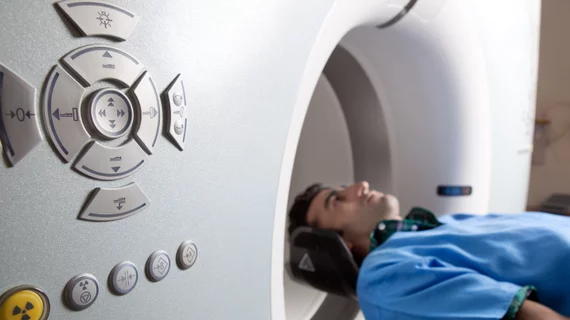Do CT radiation, reconstruction settings impact radiomics?
CT radiation dose and reconstruction settings have a significant impact on the reproducibility of radiomic features, according to a study published Oct. 1 in Radiology.
In fact, the researchers found features were so highly affected by CT acquisition and reconstruction settings that a majority were “nonreproducible.” Their findings align with previous research that has questioned the generalizability of radiomics.
“Recent evidence suggests that caution should be used when generalizing the prognostic impact of radiomics because of the confounding effect of differences in patient populations and acquisition parameters and reconstruction techniques between institutions,” Mathias Meyer, MD, of Duke University Medical Center’s Department of Radiology, and colleagues.
Image feature extraction and analysis—or radiomics—has shown great promise for characterizing tumors and improved histopathologic staging, but there is little evidence as to how technical variations in patients impact these features.
“This gap in knowledge is critical, as the development of a prognostic radiomic signature will most often involve large retrospective databases with substantial heterogeneity in image acquisition and reconstruction (eg, different reconstruction algorithms, including different radiation dose settings and reconstruction settings),” the researchers added.
Meyer and colleagues included data from 78 patients with 151 metastatic liver lesions in their secondary analysis of a prospective study. All participants had undergone staging with single-energy dual-source contrast material-enhanced CT between September 2011 and April 2012. The technique parameters were altered creating 28 CT datasets per patient that included: different dose levels, section thicknesses, kernels and reconstruction algorithm settings.
Of the 106 radiomic features, 11% were reproducible for all tested radiation dose and reconstruction CT settings. Reconstructed section thickness had the largest impact on reproducibility; of all the features only 12.3% were reproducible.
“These data emphasize the need for additional compensation methods to further improve the reproducibility of radiomic features,” Meyer et al. wrote.
The researchers did point out that choosing reproducible features along with study-specific correction factors improved clustering reproducibility.
“By selecting a smaller subset of more reproducible radiomic features along with the use of study-specific correction factors, we found a significant improvement in the clustering reproducibility of radiomic features for metastatic liver lesions,” the group concluded. “Future studies are needed to determine the potential clinical benefit of radiomic features, including large longitudinal single-center or multicenter study designs with heterogeneous image acquisition and reconstruction parameters, and our described method may help to minimize the effect of technical variability.”

